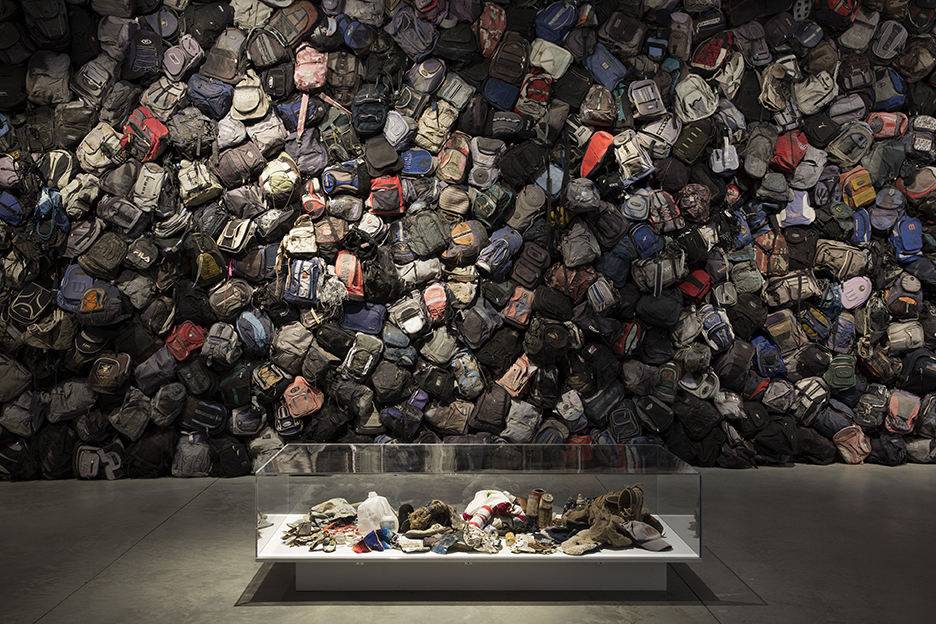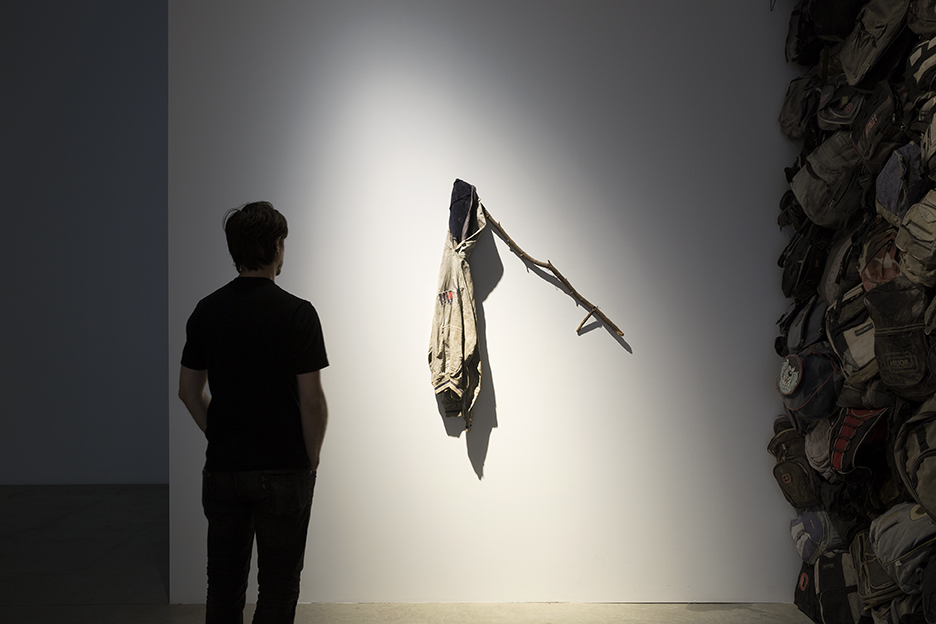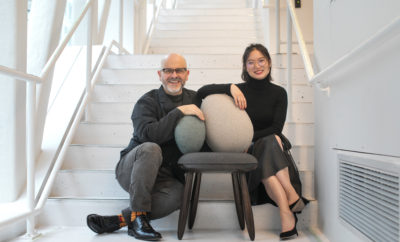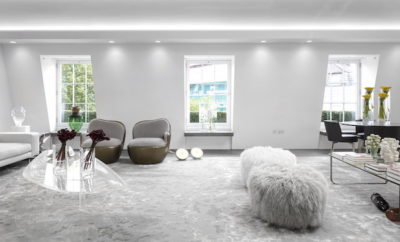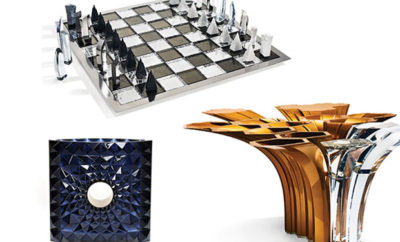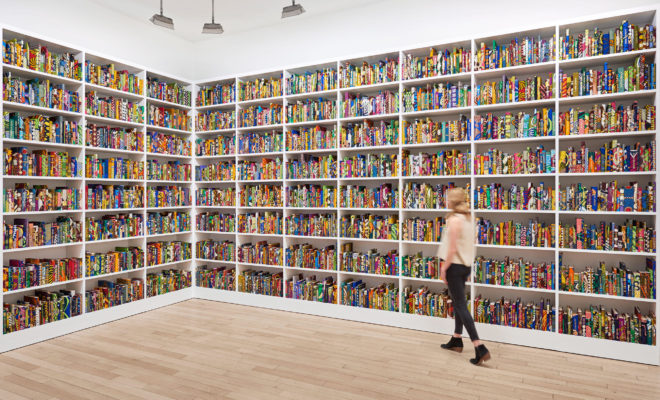 Paul Clemence photo/Courtesy the James Cohan Gallery and the artist.
Paul Clemence photo/Courtesy the James Cohan Gallery and the artist.
Exhibition
Art Walls
As discussion of the proposed border wall continues, two exhibitions in New York City use walls to introduce a completely different dialogue on immigration, one that is as insightful as it is poetic. Using books and backpacks instead of concrete blocks for their walls, these two artists remind us of the individual human element—both the complexities and subtleties—overshadowed by the political tug-of-war.
The installation, The British Library (2014), is now on view in the United States for the first time at the James Cohan Gallery, in Chelsea, New Yok, as part of British-Nigerian artist Yinka Shonibare MBE’s exhibit Prejudice at Home: A Parlour, a Library, and a Room. Six thousand books, bound in Dutch wax cloth, line all four walls from top to bottom in the gallery’s second room. On their spines, the books feature the names of individuals who have somehow added to the immigration discussion—be it for their contributions to British culture (like Iraq–born architect Dame Zaha Hadid and Japanese–born author Kazuo Ishiguro) or for their professed stance against immigration—in addition to the names of thousands and thousands of regular immigrants and refugees with poignant personal stories to tell (a complete list of the names, their respective stories, and videos are available online via iPads). Surrounded by these book-lined walls, the discussion of a global society—its benefits and contributions—reaches an even deeper level, inviting us to think about it in terms beyond the immediate. Compounding this rich dialogue is the use of colorful Dutch wax cloth. Often reinterpreted by Shonibare for his projects, the historic textiles add a subtle, telling layer to the contemporary debate on national identity and global trade. Originally inspired by the batik fabrics from Indonesia, Dutch traders started mass-producing them in hopes of selling the manufactured versions back to the Indonesians. But in an interesting twist, the Indonesians rejected them in favor of the handwoven fabrics with which they were already familiar. To move the manufactured goods, the European traders then brought them to their colonial outposts in Africa where they were so well received that the bold colors and motifs are now associated with African culture.
Material culture, but of another sort, is also the main focus in the exhibit, State of Exception/Estado de Excepción, at the Anna-Maria and Stephen Kellen Gallery at Parsons School of Design. A collaboration between artist Richard Barnes, artist-curator Amanda Krugliak, and Univeristy of Michigan anthropologist Jason de León, the exhibit features objects left behind by clandestine Mexican immigrants as they attempted to cross the US borders. Initially collected by De León for his research “Undocumented Migration Project,” the items include clothing, water bottles, toys, notepads, tooth brushes, wallets, bags, shoes, cell phones, and much more. In the gallery space, everyday items are carefully displayed in a central glass case, clothing hangs from the ceiling, and most impressively, the whole eastern wall is covered with hundreds of backpacks—a massive assemblage of models, from utilitarian ones, to name brands, to promotional themed ones meant for school supplies. Quite literally, the personal baggage left behind by hopeful individuals in search of a better life. The haunting display provides a more intimate reading of these people—they are not just numbers anymore, they are real people, and their personal artifacts are there for all to see. The solidity of the backpack wall stands in stark contrast to their instability as they try to flee unsafe and challenging circumstances.
At a time when support for the arts is in peril of losing critical funding, these two exhibits make a strong case for the importance and power of art to help people gain a deeper knowledge of present-day issues and debates, that come not just from learning the facts but from having them recast in thoughtful ways to help us better understand, respect, and accept one another—thus fostering a more tolerant and inclusive society.
www.jamescohan.com
www.newschool.edu/parson
ARTnews, one of our our sister publications, has covered the England-born and Los Angeles-based artist, Thomas Houseago, and his creation of art around the subject of walls. Read more at ARTnews.com.



